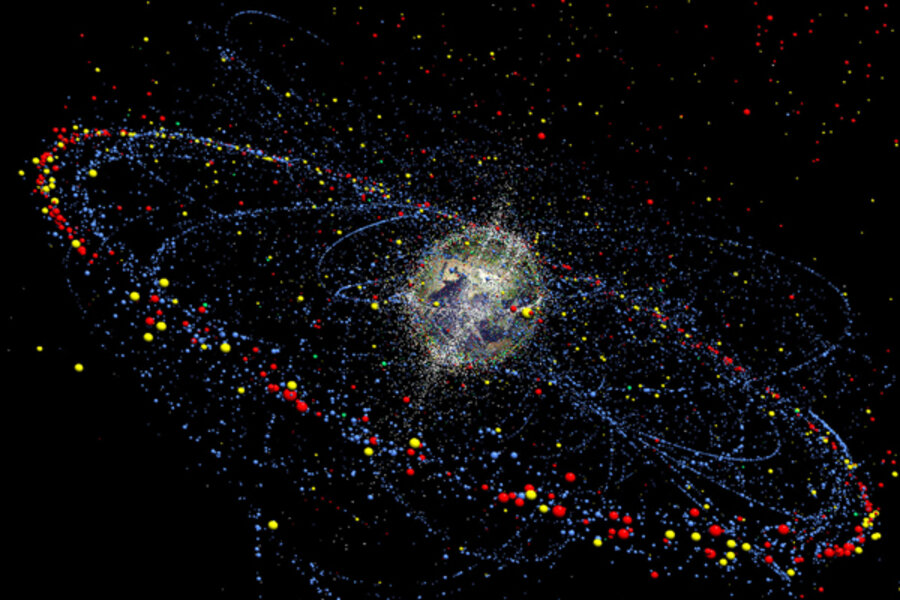How NASA dodged a derelict Soviet spy satellite
Loading...
Thanks to an emergency maneuver in March 2012, a NASA space telescope avoided a potentially nasty encounter with a Cold War relic.
More than a year later, NASA is now telling the story of how its Fermi Gamma-ray Space Telescope sidestepped a collision with a defunct Soviet spy satellite.
It all began on the evening of March 29, 2012, when Julie McEnery, the project scientist for the Fermi telescope, received an automatically generated email from NASA's Robotic Conjunction Assessment Risk Analysis team. Fermi was a week away from crossing paths with Cosmos 1805, a 3,100-lb. naval signals reconnaissance satellite launched by the USSR in 1986.
Cosmos was moving relative to Fermi at a speed of 27,000 miles per hour, fast enough to obliterate both spacecraft.
NASA actually predicted that the two craft would miss each other by 700 feet. But there was reason to be skeptical. After all, just two years earlier, a study found that another dead Russian satellite, Cosmos 2251, would pass within roughly 1,900 feet of an Iridium phone satellite. The prediction was slightly off, and both spacecraft became clouds of fast-moving orbital debris, in the first known collision of two intact satellites.
"It's similar to forecasting rain at a specific time and place a week in advance," said Eric Stoneking, an engineer for Fermi at NASA's Goddard Space Flight Center in Greenbelt, Md., in a press release. "As the date approaches, uncertainties in the prediction decrease and the initial picture may change dramatically."
The destruction of the Fermi telescope, which scans the sky for the most energetic kind of radiation, would have spelled a big setback for astrophysics. Since launching in 2008, Fermi has recorded a virtual fireworks display of exploding stars, bizarre flares, and even mysterious bubbles emanating from the center of the Milky Way. Data from Fermi has been used to confirm the origin of cosmic rays and to investigate the "missing" mass in our universe known as dark matter.
By the following day, the forecast had not improved much. The two satellites were predicted to occupy the same place within 30 milliseconds of each other.
"It was clear we had to be ready to move Fermi out of the way, and that's when I alerted our Flight Dynamics Team that we were planning a maneuver," said Dr. McEnery .
Fermi's maneuver was to involve reorienting itself, retracting its antenna, and firing its thrusters, which were designed to move the satellite into the atmosphere at the end of its mission, where it would burn up and not pose a threat to other spacecraft. These thrusters had never been tested.
"You can't help but be nervous thinking about highly flammable fluids heading down pipes they'd never flowed down before," said McEnery in the press release.
At noon on April 3, Fermi performed the maneuver, firing its thrusters for one second. The following day, the two satellites passed each other by a comfortable distance of six miles.
"A huge weight was lifted," McEnery said.
Since the launch of Sputnik in 1957, the Earth has become enveloped in space debris stretching for thousands of miles in every direction. The US , which tracks every artificial object in orbit larger than 10 centimeters, has counted some 17,000 objects. Of these, only about 1,200 are active satellites. The number of particles smaller than a centimeter, such as paint flakes, leaked coolant, and dust from rocket boosters, likely exceeds tens of millions. NASA says that spacecraft shielding can protect a craft from particles as large as one centimeter.
The greatest danger of space debris is that they can create a vicious circle known as the Kessler Syndrome. When objects in Earth's orbit that strike debris, they tend to create more debris, thus increasing the risk of future impacts, which would in turn create more debris, and so on, ultimately making space travel, and even the use of satellites impracticable because of the high risk of collision.







